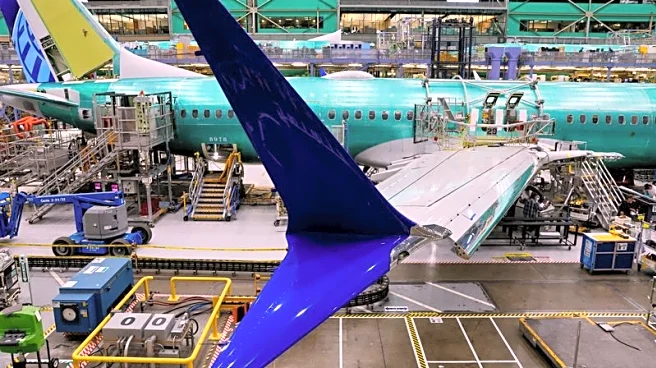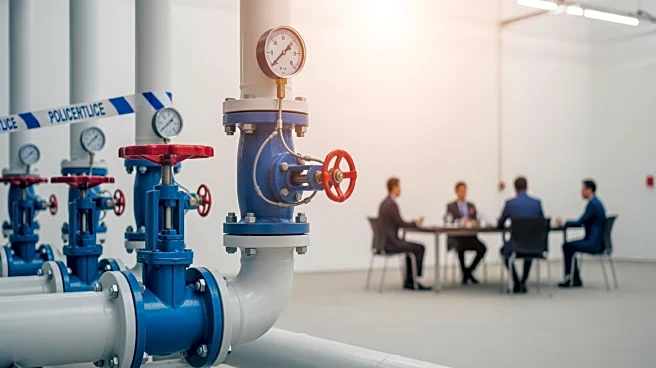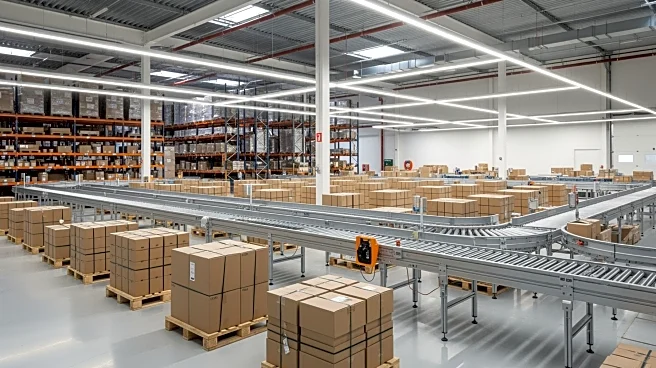What's Happening?
Boeing has officially commenced construction on a significant expansion of its 787 production facilities in North Charleston, South Carolina. The $1 billion project includes a new 1.2 million-square-foot
final assembly line building, which will be similar to the existing facility that houses two parallel lines. Additional developments include a parts preparation area, a vertical fin paint facility, and expanded flight-line stalls. The expansion aims to double the size of the flight line and factory, potentially allowing for four production lines to operate concurrently. This move is part of Boeing's strategy to increase its 787 production rate, transitioning from seven aircraft per month to eight, with plans to reach ten by 2026.
Why It's Important?
The expansion is crucial for Boeing's long-term production plans for the 787 Dreamliner, a key product in its commercial aircraft lineup. The increased capacity will enable Boeing to meet growing demand for the 787, which is known for its efficiency and versatility. With a backlog of 993 787s, equivalent to about six years of production at a 14-per-month rate, the expansion will help Boeing fulfill orders more efficiently. This development also highlights Boeing's commitment to investing in its facilities and workforce, as the company is actively promoting job opportunities associated with the expansion.
What's Next?
The new final assembly line is expected to be operational by 2028, paving the way for Boeing to potentially increase its monthly production rate beyond the previous peak of 14 aircraft per month. The expansion will also support Boeing's hiring initiatives, as the company seeks to bolster its workforce to accommodate the increased production capacity. Stakeholders, including local officials and industry leaders, are likely to monitor the progress of the expansion closely, given its implications for regional economic growth and employment.
Beyond the Headlines
The expansion of Boeing's facilities in South Carolina may have broader implications for the U.S. aerospace industry, potentially influencing supply chain dynamics and competitive positioning in the global market. As Boeing enhances its production capabilities, it may also drive innovation in manufacturing processes and technologies, contributing to advancements in aircraft design and efficiency.












